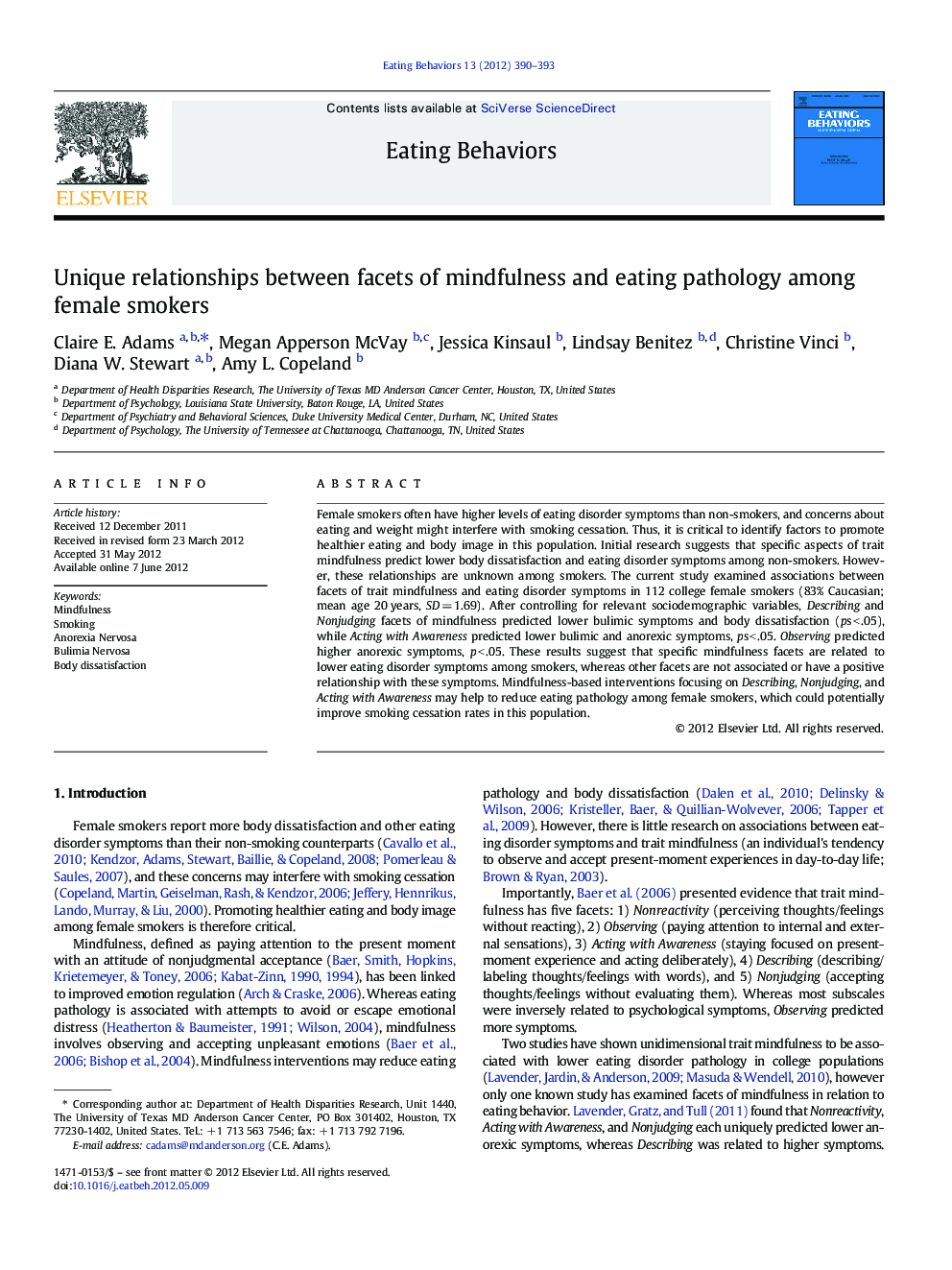| Article ID | Journal | Published Year | Pages | File Type |
|---|---|---|---|---|
| 906670 | Eating Behaviors | 2012 | 4 Pages |
Female smokers often have higher levels of eating disorder symptoms than non-smokers, and concerns about eating and weight might interfere with smoking cessation. Thus, it is critical to identify factors to promote healthier eating and body image in this population. Initial research suggests that specific aspects of trait mindfulness predict lower body dissatisfaction and eating disorder symptoms among non-smokers. However, these relationships are unknown among smokers. The current study examined associations between facets of trait mindfulness and eating disorder symptoms in 112 college female smokers (83% Caucasian; mean age 20 years, SD = 1.69). After controlling for relevant sociodemographic variables, Describing and Nonjudging facets of mindfulness predicted lower bulimic symptoms and body dissatisfaction (ps < .05), while Acting with Awareness predicted lower bulimic and anorexic symptoms, ps < .05. Observing predicted higher anorexic symptoms, p < .05. These results suggest that specific mindfulness facets are related to lower eating disorder symptoms among smokers, whereas other facets are not associated or have a positive relationship with these symptoms. Mindfulness-based interventions focusing on Describing, Nonjudging, and Acting with Awareness may help to reduce eating pathology among female smokers, which could potentially improve smoking cessation rates in this population.
► We examined associations between mindfulness and eating pathology in female smokers. ► Describing, Nonjudging, and Acting with Awareness predicted less eating pathology. ► The Observing facet of mindfulness predicted higher anorexic symptoms. ► Certain aspects of mindfulness might promote healthier eating in female smokers.
